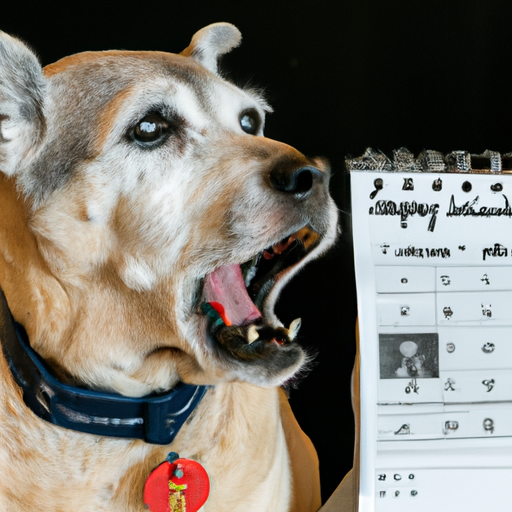As loving caregivers of our furry friends, one of the most challenging aspects is dealing with their health issues, particularly when it comes to conditions that significantly impact their quality of life. One such condition is laryngeal paralysis, a common problem in older, large-breed dogs. It is a condition that raises many questions, especially the pressing one – how long can dogs live with laryngeal paralysis?
Table of Contents
1. Understanding Laryngeal Paralysis
2. Causes and Symptoms
3. Diagnosis and Treatment Options
4. Living with Laryngeal Paralysis
5. Frequently Asked Questions
Key Takeaways
– Laryngeal paralysis is a common condition in older, large-breed dogs.
– The condition significantly affects a dog’s respiratory system, leading to difficulty in breathing.
– There are various treatment options available, including surgery.
– With proper management, dogs with laryngeal paralysis can lead a comfortable life.
Understanding Laryngeal Paralysis
In a healthy dog, the larynx (or voice box) plays a crucial role in breathing, swallowing, and barking. But in a dog with laryngeal paralysis, the nerves that control the muscles and cartilage that open and close the larynx don’t function properly, leading to difficulty in breathing.
This medical condition is quite common in breeds like Labrador Retrievers, Golden Retrievers, and St. Bernards, but it can affect any dog. It is also more prevalent in older dogs, particularly those over the age of 9. To learn more about the condition, the American Kennel Club provides an excellent resource.
Causes and Symptoms
Laryngeal paralysis can occur due to various reasons, including nerve damage from injury or surgery, a hereditary nerve disorder, or a symptom of a broader neurological issue. Often, the cause is unknown, termed as idiopathic laryngeal paralysis.
The most common symptoms include:
- Change in bark
- Difficulty breathing, especially in hot weather or during exercise
- Coughing or gagging when eating or drinking
- Increased anxiety or panic, especially in stressful situations
If you notice these symptoms in your pet, it’s essential you seek veterinary help as soon as possible.
Diagnosis and Treatment Options
Diagnosing laryngeal paralysis involves a procedure called laryngoscopy, where a vet examines the larynx for movement. If your dog’s larynx isn’t moving as it should, the vet will diagnose laryngeal paralysis.
Treatment for this condition depends on its severity. For mild cases, lifestyle changes such as maintaining a healthy weight, avoiding hot weather, and reducing stress can help manage the symptoms. For more severe cases, surgery is often recommended.
A surgical procedure, called ‘Tie-back’ or ‘Laryngeal Lateralization,’ is one of the most common treatments. This procedure involves tying back one side of the larynx to allow easier breathing. However, this surgery also increases the risk of aspiration pneumonia, an important factor to consider.
While surgery can significantly improve a dog’s quality of life, it’s not a cure for laryngeal paralysis. Nonetheless, with proper care, dogs who’ve had the surgery can lead a comfortable life. For more insights on dog health and care, you can visit this resource.
Living with Laryngeal Paralysis
It’s important to remember that each dog is unique, and the prognosis can vary. Some dogs live several years with the condition, while others may have a more limited timeframe. But with proper management, a dog with laryngeal paralysis can lead a relatively normal life.
Here are some tips to help manage your dog’s condition:
- Maintain a Cool Environment: Dogs with laryngeal paralysis have difficulty cooling themselves down, making them more prone to overheating. Keep your home cool and provide plenty of fresh water.
- Moderate Exercise: Regular, gentle exercise can help maintain your dog’s overall health. Avoid strenuous activity, especially in hot weather.
- Elevate Food and Water Dishes: This can make eating and drinking easier and reduce the risk of aspiration.
- Regular Vet Check-ups: Regular follow-ups with your vet can help monitor your dog’s condition and adjust the treatment plan if necessary.
For further information on dog care, consider checking out this guide.
Frequently Asked Questions
1. What is the life expectancy of a dog with laryngeal paralysis?
This depends on various factors including the dog’s overall health, age, and how well the condition is managed. With proper treatment and care, many dogs can live comfortably for several years.
2. Can laryngeal paralysis in dogs be cured?
There is currently no cure for laryngeal paralysis. However, treatments are available to manage the condition and improve the dog’s quality of life.
3. What breeds are most affected by laryngeal paralysis?
Laryngeal paralysis is more common in large breed dogs, especially Labrador Retrievers, Golden Retrievers, and St. Bernards. However, it can affect any breed. For more details on dog breeds and their common health concerns, this article might be helpful.
Caring for a dog with laryngeal paralysis can be challenging, but remember, your pet can still lead a happy life with your love, care, and proper management of the condition.



